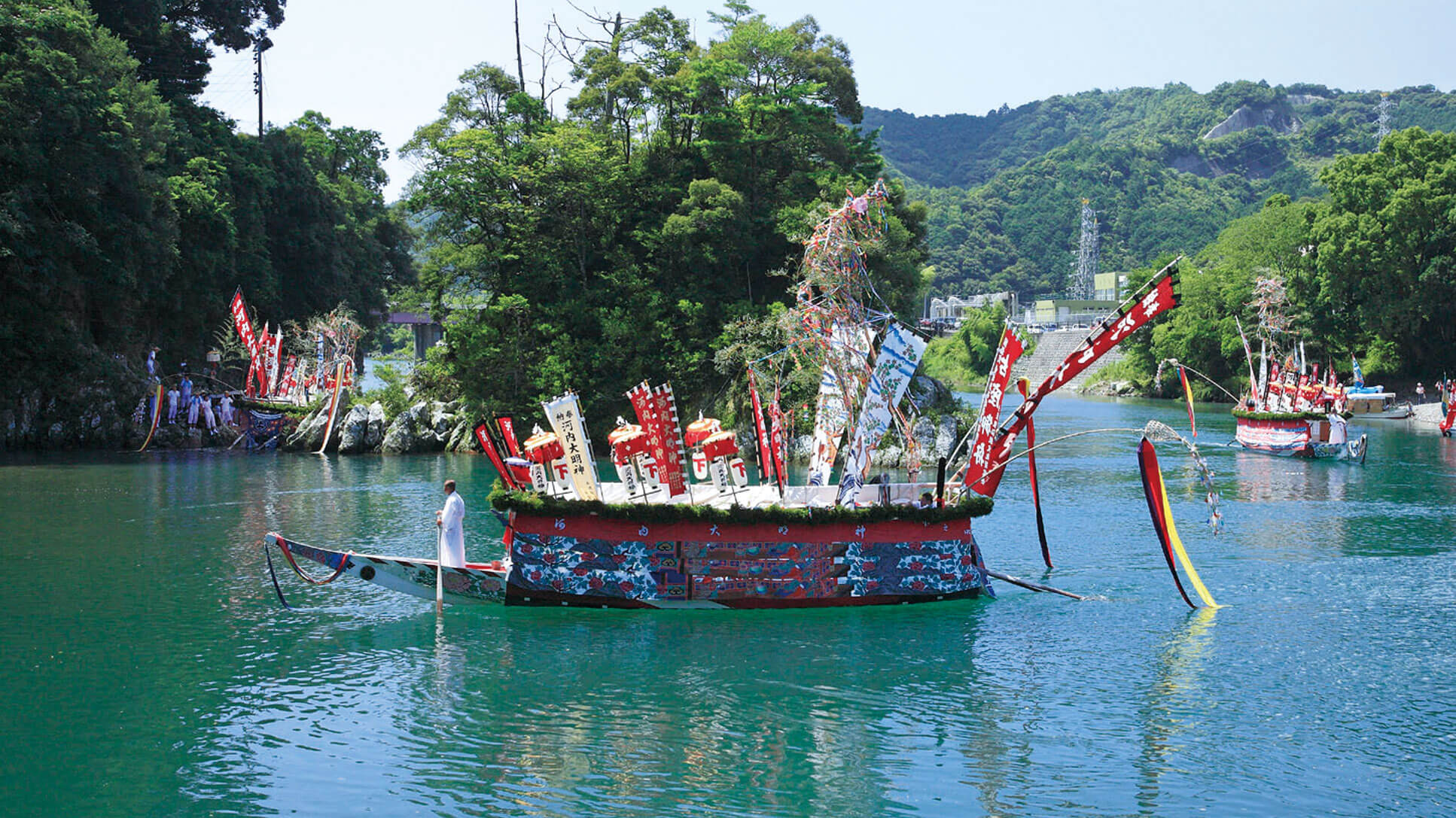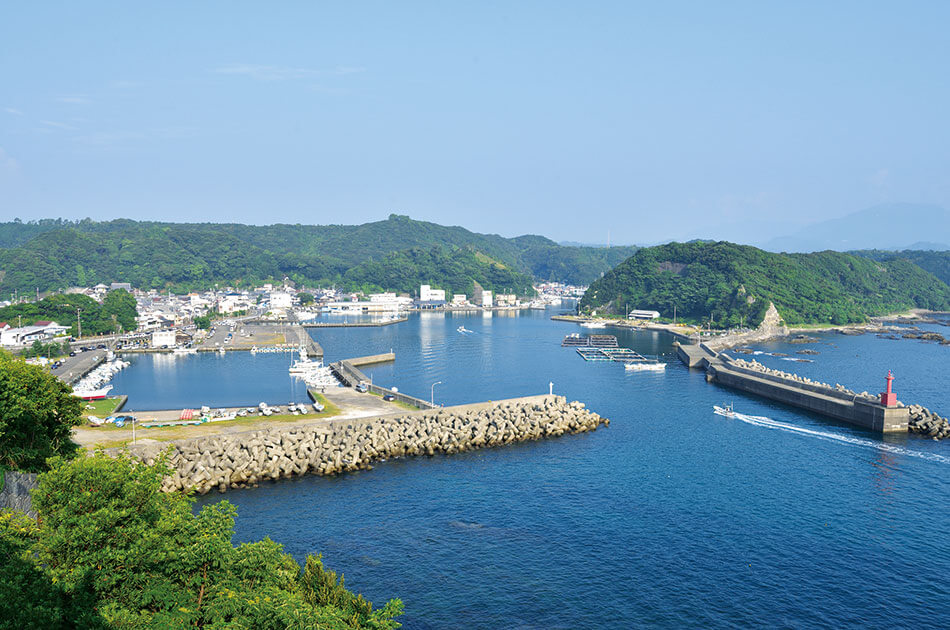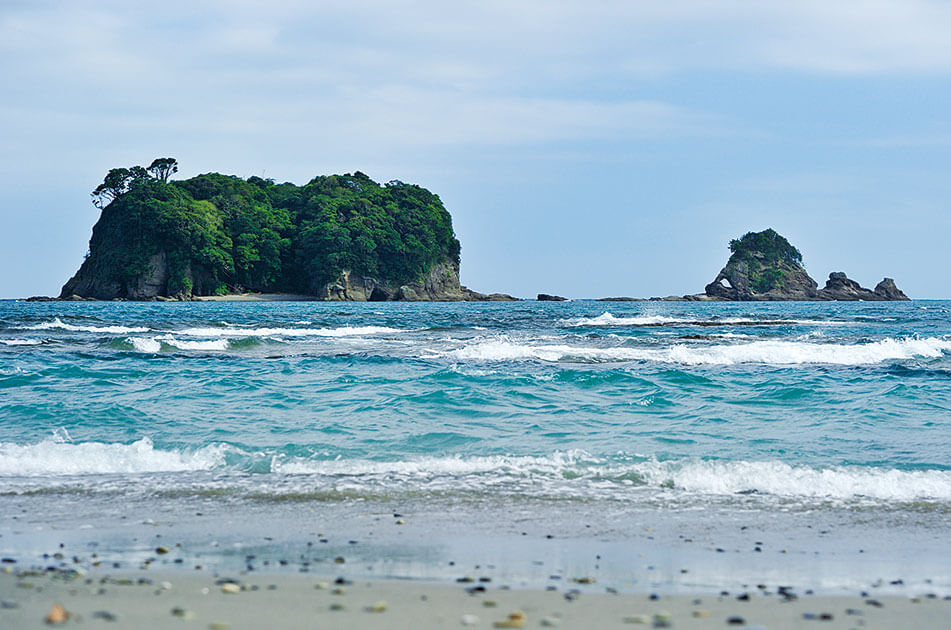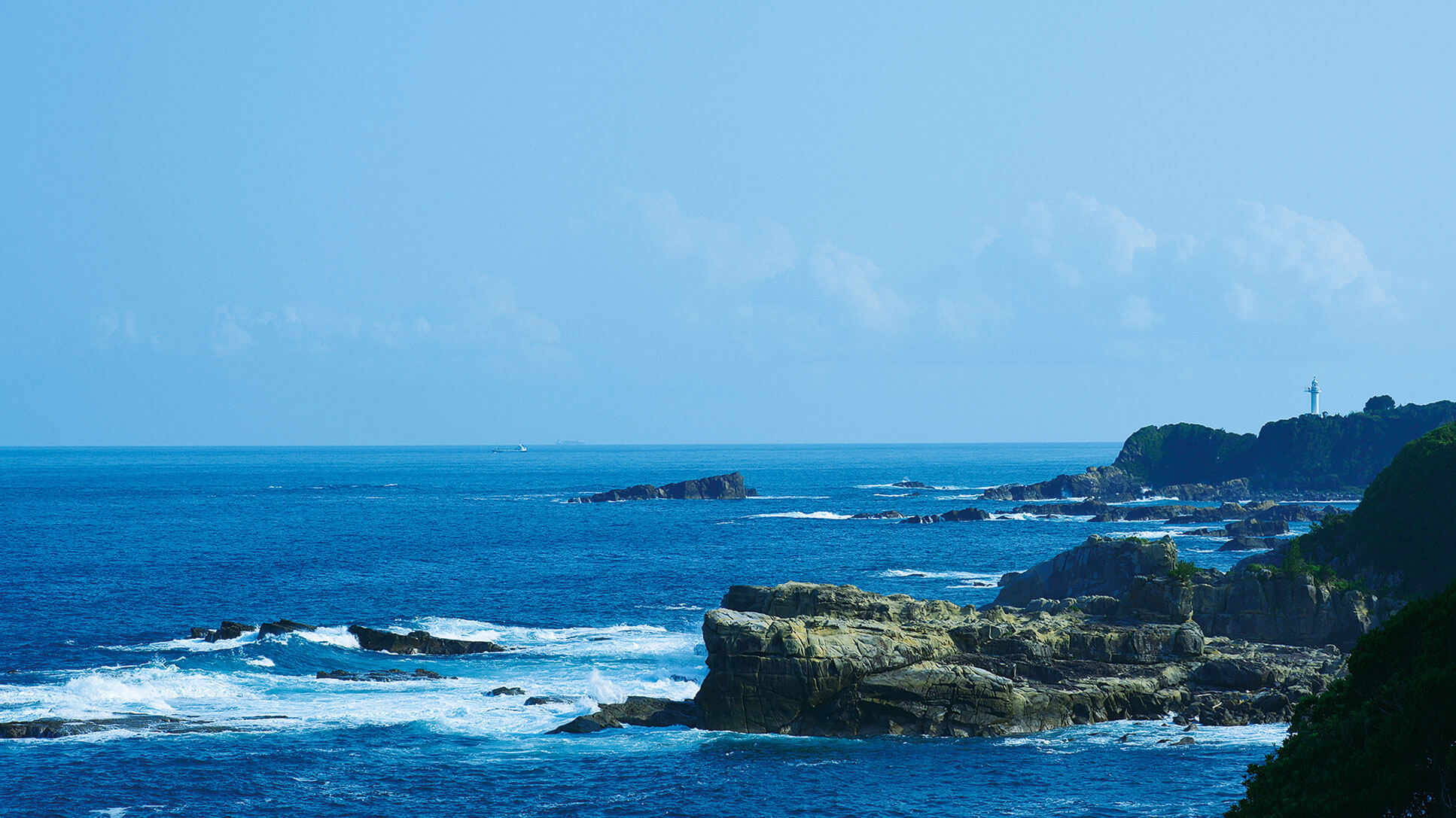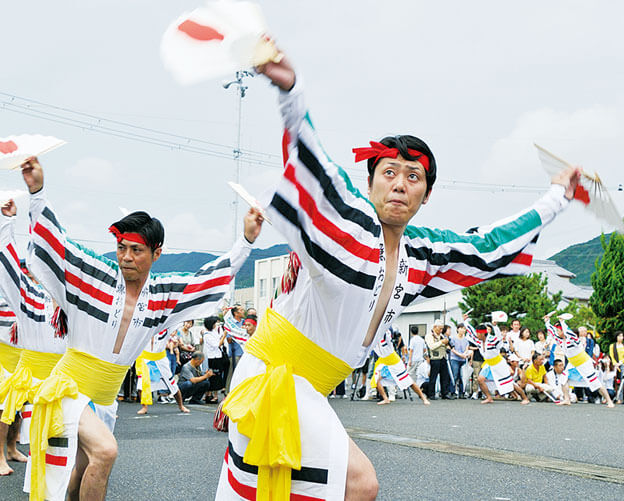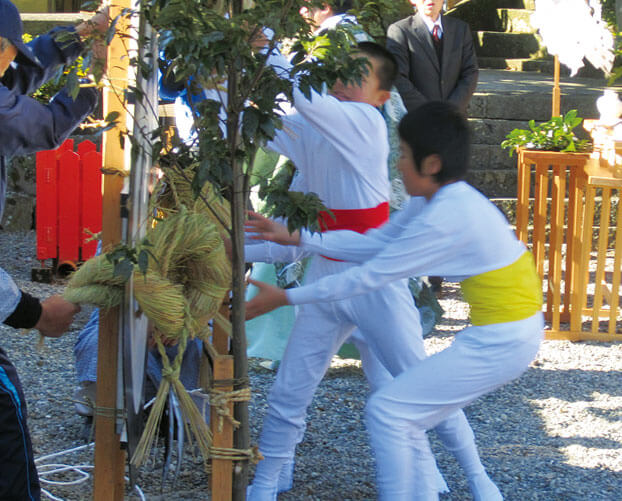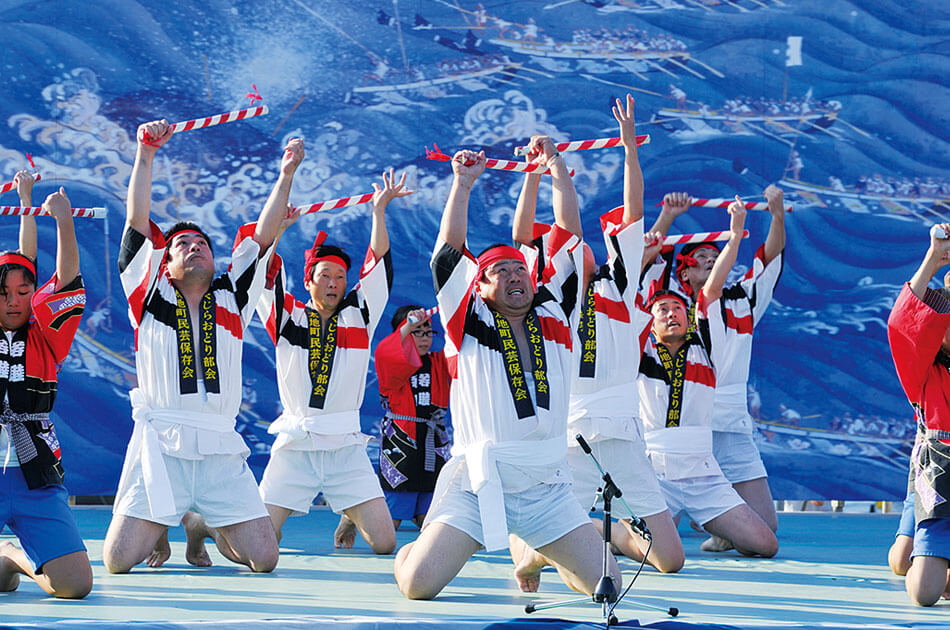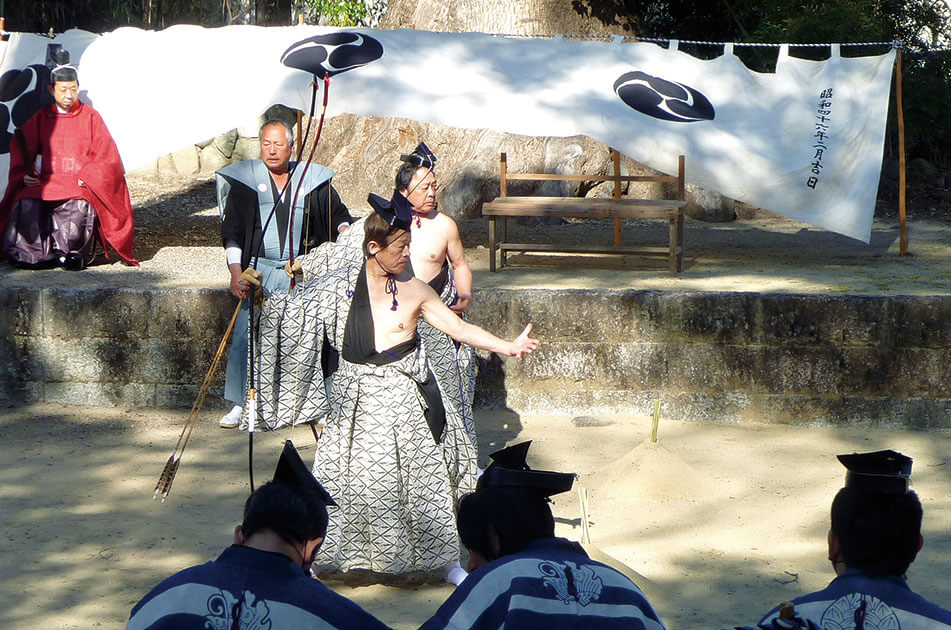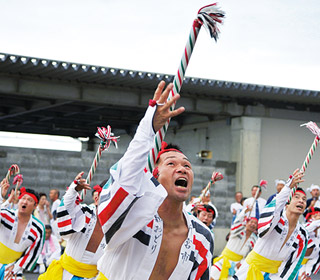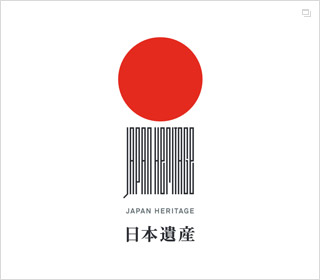In addition to Taiji (present-day Taiji, Taiji-cho), traditional whaling was also carried out in Miwasaki (present-day Miwasaki, Shingu-shi) and Koza (present-day Koza, Kushimoto-cho).
The traditions of traditional whaling have been passed down in Taiji, where people continue to practice them in nearby ocean waters, albeit on a smaller scale targeting smaller species. Tangible and intangible cultural properties that communicate the history and culture of whaling in the Kumano area provide a means of tracing the story of whaling.
Historic sites such as mountain lookouts and smoke signal sites evoke the stirring heroism of traditional whaling. Monuments memorializing whales testify to the value people placed on the mammals and the gratitude with which they saw them.
Festivals and traditional performing arts that celebrate whales provide a more immediate glimpse of the deep connections between people and whales. The region has maintained a variety of distinctive events that have been passed down from each generation to the next, including the passage of a gorgeously adorned ceremonial boat and the Whale Dance, which recreates the heroism of the whale hunt. Many elementary school students in the city of Shingu and in the town of Taiji learn the Whale Dance as part of their study of their local community.
For people living in coastal areas along the Kumano Sea, whales continue to be a special and familiar presence. With its 400 years of history, the area’s deep-rooted whaling culture remains alive to this day.
 Japan Heritage Living with Whales Story
Japan Heritage Living with Whales Story




